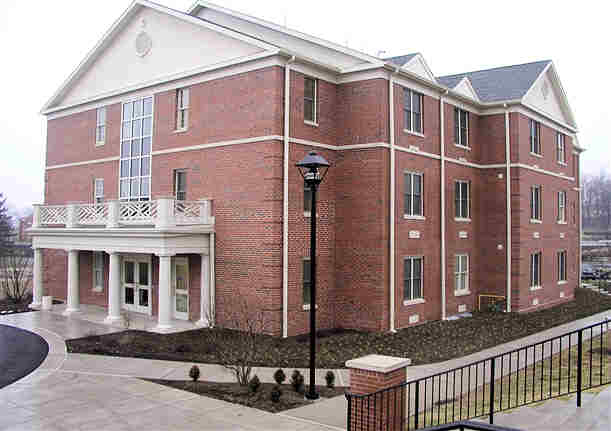Pittsburgh: Building a Greener Future
Some of the most beautiful architecture in the country can be found in and around Pittsburgh. However, as weather delays and energy costs grow, Pittsburgh has seen the economic advantages of modular buildings and taken the lead in the green building movement.
In fact, one of the greenest buildings on Earth is the Phipps Conservatory and Botanical Gardens’ Center for Sustainable Landscapes in Pittsburgh. Although the construction is not modular, the Center incorporates many of the same green and sustainable building practices used in the modular building industry.

One obvious benefit of modular construction is that the sections are manufactured off-site in a factory, transported by truck to the building site, and then dropped by crane into place, shaving months off of the entire process. In the Pittsburgh neighborhood of Oakland, for example, workers recently installed a highly energy-efficient three-story modular apartment building in just a few days.
Visit the website of a modular building company, such as Modular Genius, to learn more about the green benefits of modular construction, such as:
- Waste Reduction – Factory manufacturing reduces the potential for errors. Accurate measurements minimize waste on the front end. Building materials are more carefully monitored and better protected compared to traditional construction on an exposed jobsite.
- Sustainable Materials – Modular buildings are often constructed with recycled steel and sustainably sourced timber.
- Quality Control – Every step of the modular construction process is precise, and there are regular quality inspections throughout. This virtually eliminates unexpected complications that often occur on site-built projects.
- Reusable – If you move or your configuration needs change, a modular building can be disassembled and the modules can be redeployed in new configurations or locations.
- Tighter Envelope– Permanent modular construction usually results in a tighter building envelope, thereby increasing energy efficiency and improving indoor air quality, mold and fire resistance. This is due to the fact that transporting modules long distances requires more durability and better protection from moisture.
- Cost/Time Savings – Modular construction reduces design and construction costs by 20% to 40% and shortens the construction timeline by at least 40%.
- Compatible with LEED– Modular buildings can compete in the same Leadership in Energy & Environmental Design (LEED) categories as stick-built structures.
You will also find that many municipalities encourage green building by offering tax and marketing incentives, such as expedited permit processes (which can take 18 months or longer for conventional buildings).
There are often financial incentives available in the form of tax credits, fee reductions or waivers, grants, and even low interest loans. Some municipalities offer free green planning assistance and others offer free signage and marketing incentives for LEED-certified projects.
Single and multi-story modular buildings can be designed for office buildings, customer service centers, banks, worship facilities, medical clinics and labs, classrooms, and complete school campuses, to name a few. With customized brick, stucco and other exterior finishes that blend in with surrounding buildings, it’s nearly impossible to distinguish them from stick-built structures.
We highly recommend that you check out the award-winning modular buildings designed by Modular Genius.
Modular buildings are suitable for a wide range of residential, commercial and industrial uses in Pittsburgh. They dramatically improve sustainability in comparison to conventional building practices. The process is fast, flexible, budget-friendly and efficient, and it can all be accomplished without sacrificing high quality and beautiful, innovative designs.
